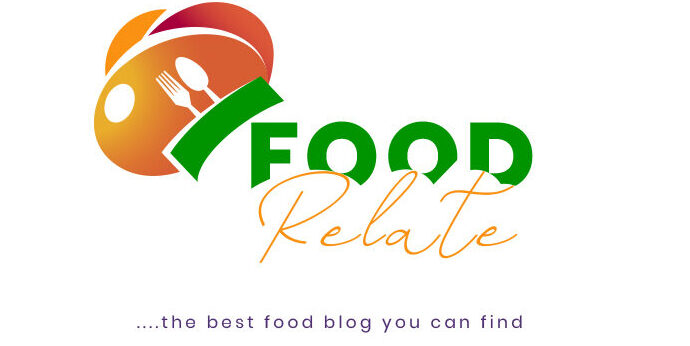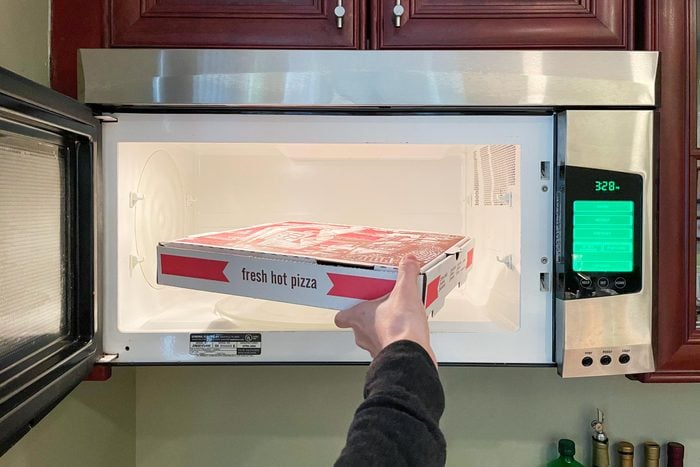Cardboard is a material used in packaging and shipping because of its durability and low cost. It is made from a combination of recycled paper pulp, wood pulp, and other materials, which can vary depending on the intended use and manufacturer.
The main component of cardboard is paper pulp, created by breaking down and blending recycled paper products, such as old newspapers and magazines. This pulp is mixed with water and other additives to make a slurry, which is spread out and dried into thin sheets.
Wood pulp is a type of pulp made from wood chips, shavings, and sawdust. It is the most common type of pulp used in the production of paper products, including cardboard. The addition of wood pulp helps to increase the rigidity and stiffness of the cardboard, making it more resistant to bending and crushing. Other materials may also be added to the mixture to enhance the properties of the cardboard.
Reasons You Should Not Put Cardboard In The Microwave
Putting cardboard in the microwave can be dangerous and is not recommended. This is because cardboard is often coated with a thin layer of metal or foil, which can cause sparks and potentially start a fire in the microwave.
Cardboard may contain adhesives or other materials that can release harmful chemicals when heated. It will not only ruin your food and damage your microwave, but it could also create a dangerous situation for you and your household. It is always best to avoid placing cardboard in the microwave and instead use microwave-safe containers made of glass, ceramic, or plastic.
What Happens When you Put Cardboard in the Microwave
When you put cardboard in the microwave, the results can be unpredictable and potentially dangerous. This will not only damage your microwave but can also put you and your household at risk.
If the cardboard does not contain metal or foil, it can still release harmful chemicals when heated. Cardboard may contain adhesives, ink, or other materials that can off-gas or release fumes when exposed to high temperatures. These fumes can mix with your food and create a dangerous situation.
Moreover, when heated, cardboard can also become soft and soggy, which can cause it to break down and mix with your food. This can not only make your food taste bad but can also create a choking hazard.
What Are Some Alternatives to Using Cardboard in the Microwave?
When it comes to using the microwave, it’s important to be mindful of the materials you use to avoid any potential safety hazards. While cardboard can be a convenient option for covering food in the microwave, it’s not always the safest choice. When heated, cardboard can release harmful chemicals and potentially catch fire.
Luckily, there are several alternatives to using cardboard in the microwave. Here are a few options:
- Microwave-safe plastic wrap
This is an excellent alternative to cardboard because it is designed for use in the microwave. Look for a plastic wrap that’s labeled microwave-safe and follow the instructions carefully to ensure safe use.
- Glass containers with lids
Glass containers, such as Pyrex, are microwave safes used to heat food. Just be sure to remove any metal lids or clasps before microwaving.
- Ceramic plates or bowls
Ceramic dishes are microwave-safe and can be used to reheat leftovers or cook food. Just be sure to avoid any dishes with metallic accents or glazes.
- Paper towels
When heating food in a microwave, you can cover it with a damp paper towel in case of emergencies. This can help prevent splatters and keep food moist.
It’s important to note that not all materials are safe for use in the microwave. Always read the labels and instructions carefully before using any materials in the microwave to ensure safe and effective use.
Read Also:
- What Makes Pizza Greasy
- Is There A Difference Between Candy Thermometer And Meat Thermometer?
- How Long Does Banana Bread Last
How to Properly Microwave Your Food Without The Use Of Cardboard?
Microwaving food is a quick and easy way to heat your meals, but how can you do it safely and without using cardboard? Here are some tips on how to properly microwave food without using cardboard:
- Use microwave-safe containers
It’s important to use containers labeled as “microwave-safe” in the microwave. These containers are typically made of glass, ceramic, or plastic designed to withstand the heat of the microwave.
- Avoid metal or foil
Never put metal or foil in the microwave, as it can cause sparks and start a fire. This includes aluminum foil, metal utensils, and even containers with metal rims or handles.
- Use a microwave cover
A microwave cover helps to prevent splatters and keeps your food moist. You can use a microwave-safe lid, a safe plate, or a damp paper towel to cover your food.
- Stir or rotate your food
When microwaving food, stir or rotate it every 30 seconds to ensure even heating. It helps to prevent hot spots and cold spots in your food.
- Follow cooking instructions
If you’re using a microwaveable meal, follow the cooking instructions on the package. This will ensure that your food is cooked properly and thoroughly.
By implementing these suggestions, you can securely and efficiently heat your food in the microwave without relying on cardboard.
Other Safety Precautions You Should Take When Using the Microwave?
Microwave is a convenient and easy way to reheat and cook food. However, it’s important to take certain safety precautions to avoid any potential hazards. Here are some other safety precautions you should take when using the microwave:
- Use microwave-safe containers
As mentioned earlier, it’s important to use containers that are specifically designed for use in the microwave. These containers are made of materials that can withstand the high heat and energy of the microwave without melting or releasing harmful chemicals.
Always check the label or manufacturer’s instructions to ensure that a container is microwave-safe before using it.
- Don’t overheat food
Overheating food in the microwave can cause it to explode, which can be dangerous and cause burns. To avoid this, always follow the recommended heating times and power settings for your food.
Stirring the food and letting it stand for a few minutes before eating can help distribute the heat evenly and avoid hot spots.
3. Keep the microwave clean
Food splatters and spills can build up in the microwave and create a fire hazard. Regularly cleaning the inside of the microwave with a damp cloth or sponge can help prevent this.
Additionally, avoid using harsh chemicals or abrasive materials when cleaning the microwave as they can damage the interior and create a fire hazard.
By following these safety precautions, you can ensure that your microwave is used safely and efficiently.
Conclusion
It is not safe to put cardboard in the microwave. due to the risks of fire and chemical contamination. Moreover, cardboard may contain adhesives or other materials that can release harmful chemicals when heated, which may invariably affect your health and safety.
Instead, it is best to use microwave-safe containers made of glass, ceramic, or plastic to avoid any potential safety hazards and ensure that your food is heated safely and effectively.
Do you also think is harmful to put your cardboard in your microwave, have you ever had any experience in putting cardboard in the microwave, lets know in the comment section.



